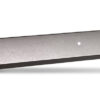
Youth Vaping Prevention - New Resources Now Available
In response to resource requests from school administrators and staff, Spokane Regional Health District’s (SRHD) Tobacco, Vapor Product, and Marijuana Prevention program is providing the following resources to school district superintendents, principals, administrators and staff who need resources to help decrease existing and new use of vapor products by youth.
In terms of how many youth are currently vaping, results from the 2018 Washington State Healthy Youth Survey showed vaping among Spokane County eighth, 10th,and 12th graders doubled between 2016 and 2018 (from 15% to 30%).
Yet, the increase is not specific to Spokane County. In fact, Food and Drug Administration (FDA) recently declared youth vaping a nationwide epidemic, drawing attention to the risks of youth vaping, including impacts on learning, health and behavior.
Ready for resources? Here’s what you should know:
INTERVENTION:
Review this Office of Superintendent of Public Instruction (OSPI) one-pager called Red Flag for Supports: Students Who Smoke or Vape, which examines youth tobacco and vapor product use. It explores vaping’s relationship with youth who experience depression and thoughts of suicide. The document also provides recommendations for school policy approaches, screening, and referral to treatment and other support programs. You can also view the webinar about this topic for more information.
If youth are caught using tobacco or vapor products on campus, use alternatives to suspension and provide counseling or referral to cessation services.
For more information to help your school, visit this best practices page.
CESSATION AND OTHER SUPPORT: Vapor products that contain nicotine are addicting and youth may need help with cessation. Any youth caught with vapor products should be referred to cessation resources. Cessation resources for youth are available and include:
Washington State Quitline. Youth who are 13-17 who currently use tobacco/nicotine products can enroll by calling 1-800-QUIT-NOW or going to quitnow.net/mve/quitnow and registering for services. The quitline offers cessation counseling for youth and is staffed with highly trained quit coaches who provide anonymous support including:
quit plan development
judgment-free support
support between scheduled calls
health education and information
skills for refusal and problem solving
discussion of triggers, peer influences, environmental/household exposure to tobacco use, and stressors
relapse prevention through planning and preparation
SmokefreeTeen. This is a text message-based program that can help teens who want to stop vaping. They can enroll by going to the website.
Truth Initiative’s text message-based program can help teens quit vapor products. Youth can sign up with a simple text to the program.
The Not On Tobacco® group (N-O-T) is the American Lung Association’s voluntary smoking cessation program for teens ages 14 – 19. Over the 10-week program, participants learn to identify their reasons for smoking, healthy alternatives to tobacco use and people who will support them in their efforts to quit. Contact Molly Ryan at the American Lung Association in Washington to learn more: Molly.Ryan@lung.org
Washington state has a Recovery Helpline (1-866-789-1511) available 24 hours a day. The hotline is a free, confidential resource for those struggling with issues related to mental health, substance abuse, and problem gambling. People can also call the helpline to talk about how to help someone they care about who may be struggling with substance use.
Teen Link (1-866-TEENLINK) is a hotline just for teens. Teen Link is available every evening from 6 p.m. – 10 p.m. (PT). Teens can call and get support from trained volunteers about a variety of issues.
PREVENTION:
SRHD can help your school or school district choose a curriculum and provide guidance on the best way to implement. Curriculums like the theory-based and evidence-informed Stanford Tobacco Prevention Toolkit are easy to implement and can be used with limited resources.
Give families tools to talk to their kids—they can visit starttalkingnow.org
Implement campaigns in your school like FDA’s “The Real Cost” with free posters and infographics.
Escape the Vape is a website for middle-school-aged youth to learn more about the chemicals found in vaping devices. Public Health – Seattle and King County developed easy-to-use resources for teachers to promote the campaign, including activities for elementary and middle school youth. You can find the materials here.
Subscribe to SRHD’s Triangulum news to receive localized quarterly newsletters focused on tobacco, vapor products, and marijuana prevention. You can sign up by clicking here.
Questions about these resources or interested in receiving support from SRHD? Contact SRHD’s Tobacco, Vapor Product, and Marijuana Prevention program at 509.324.1668, email healthycommunities@srhd.org or visit srhd.org


